What to wear for winter hiking in Alberta
What should you wear on a winter hike? We get asked this question a lot!
Hiking in the beautiful winter landscape is a treat, but it can be unpleasant or even dangerous if you’re not dressed appropriately. Luckily, there are a few simple guidelines you can use to stay warm, dry, and comfortable in the winter weather.
The three-layer system is key
If there’s one thing you should remember for winter hikes, it’s that layers are critical to staying warm and comfortable on the trail. Many outdoor professionals and enthusiasts follow the three-layer system to keep warm during outdoor activities. Layering gives you more flexibility in adjusting your clothing as needed based on temperature changes during your hike.
What are the three layers of clothing you should wear when outside in the winter? We’ll help you understand what each layer is and its purpose so you can make better decisions about your clothing purchase and how to dress on a hike.
Layer one: The base layer
This layer goes against your skin and its main purpose is to wick away sweat. Start with a long-sleeved shirt made of a moisture-wicking fabric, like high-performance nylon.
We’ve also found that using moisture-wicking fabric for our undergarments has made a huge difference in preserving warmth.
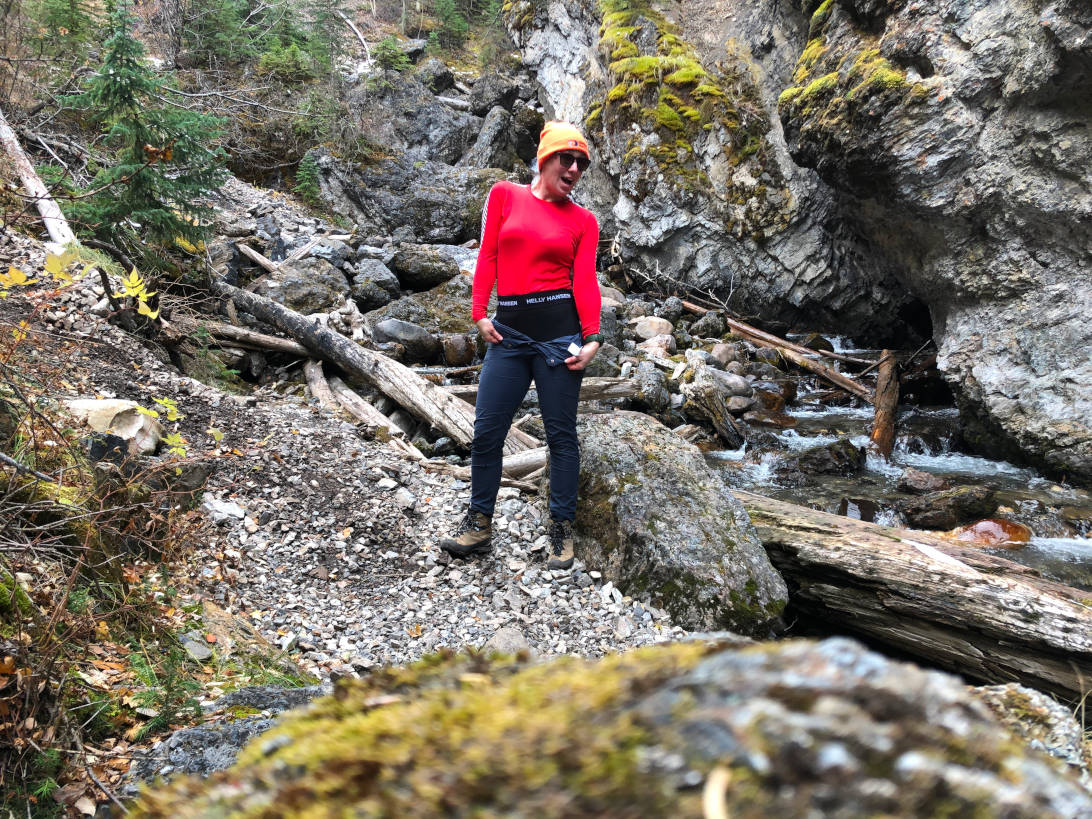
Layer two: Insulative layer
The insulative layer does just what its name suggests—it preserves the warmth emitted from your body. You can opt for a fleece sweater or down jacket, for example. Different materials and jackets offer different levels of insulation, depending on how cold it is and your personal preference with how much insulation you like.
For down jackets, look at the down fill rating to see how much insulative power it has; the more fill, the warmer it is.
Here at Uplift, we often carry with us two insulative layers while adventuring: one thinner layer and one heavy-duty, insulative layer. We want to adjust our warmth to our activity level. Sweating in the winter time can be dangerous, so we want to sweat as little as possible, which means that sometimes we don’t wear an insulative layer at all if our activity output is high.
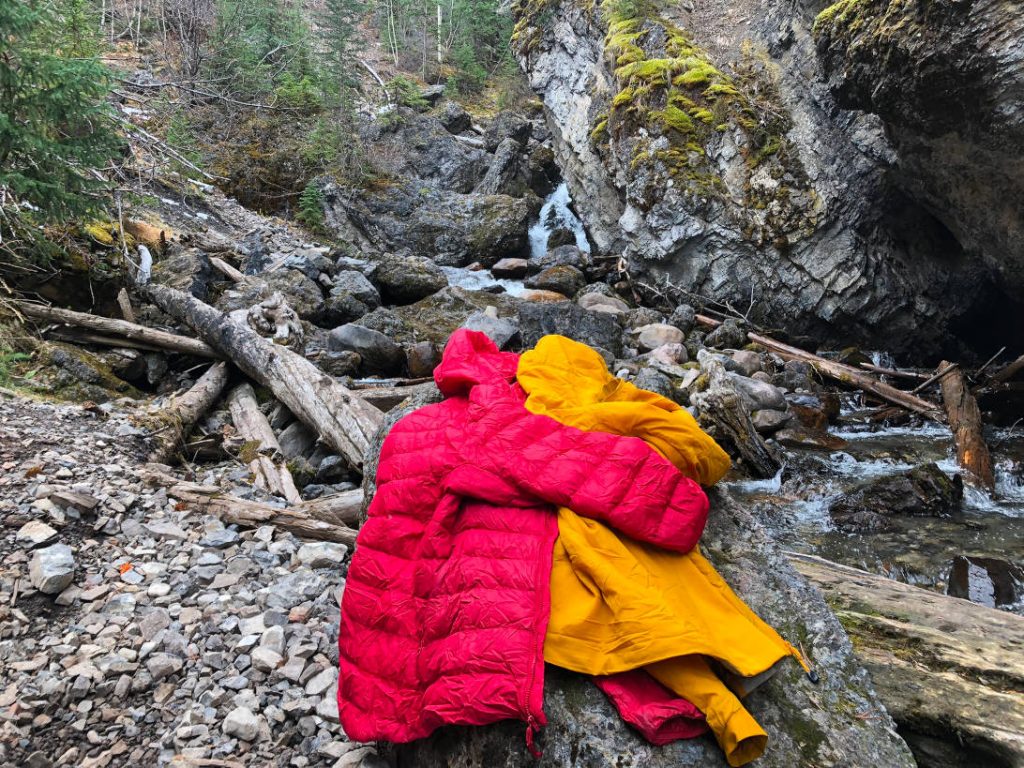
Layer three: The shell
The point of this layer is to protect you from the elements. You can have a hard shell or a soft shell. Hard shells are usually made from a waterproof, breathable fabric like Goretex, and are more stiff than soft shells, which are made of breathable, stretchy fabrics that move with you. When it comes to waterproof ability, hard shells usually perform better.
Just like the insulative layer, we don’t always wear a shell when we’re out adventuring. It all depends on the weather and the activity we’re doing.

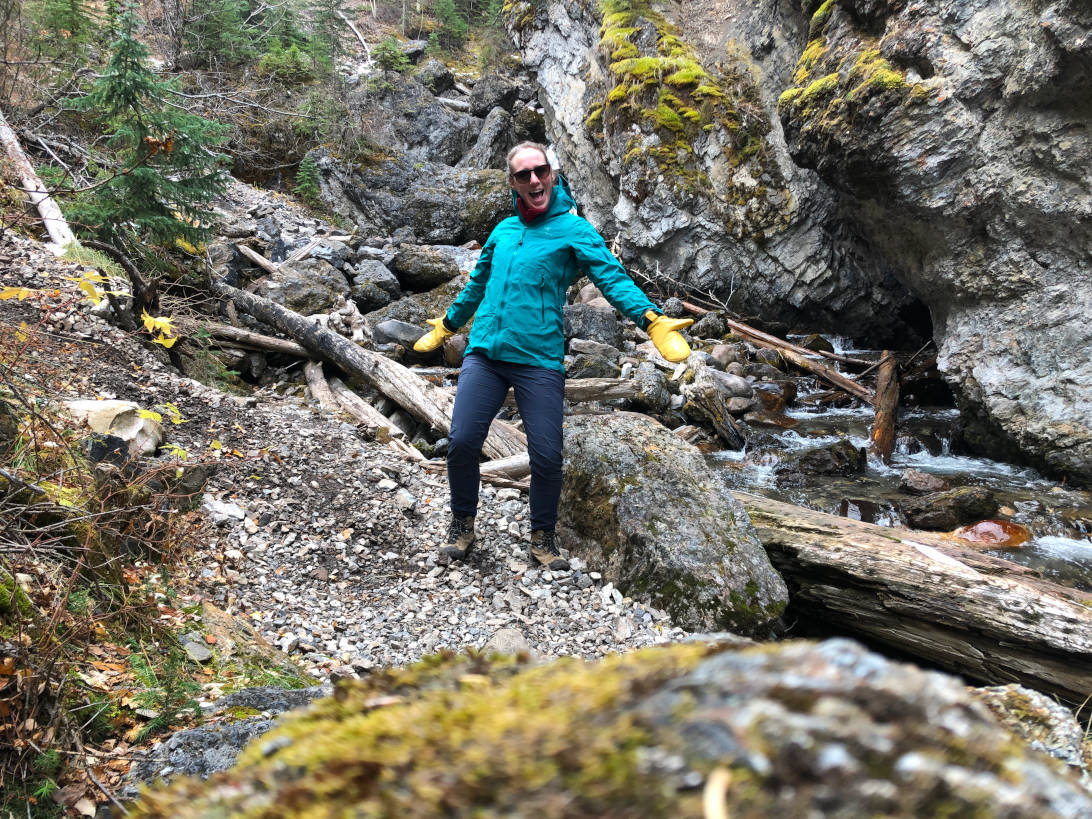
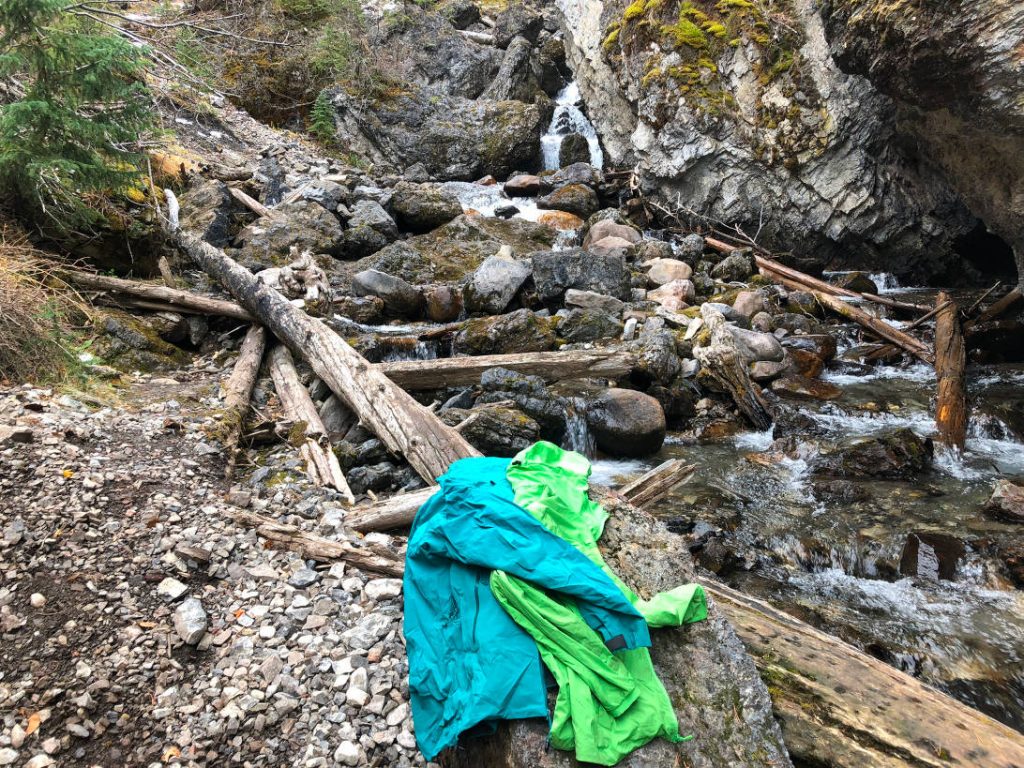
Easy-on, easy-off layers make life easier
One problem with wearing multiple layers is overheating–make sure that if you find yourself too hot, there’s something easy for taking off quickly like an unzipped section at the neckline so air can flow more easily around your body without all those extra layers getting in its way.
Avoid cotton and opt for wool or synthetic materials
Staying warm during winter hikes is important, but staying DRY is even more important—because as soon as you you start sweating and your clothes get damp, you’re sure to get cold.
The best way to avoid this is by using wool or synthetic materials like some of the types we mentioned above.
Stay away from cotton clothing, especially for your base layer. It gets wet easily and doesn’t insulate when wet. Wool and synthetic materials will keep their insulating properties even when wet because they repel water instead of absorbing it into the fabric itself.
Get a leg up on the cold
Figuring out which pants to wear on a winter hike can be tricky, but remembering the three-layer system will help you choose the right trousers for your trek.
On really cold days, start with a base layer (that important moisture-wicking fabric) followed by an insulative layer (like down or synthetic-filled pants) and finally, a hard shell (a Gore-Tex material would work great here).
We don’t wear these three layers all the time. Depending on weather, we often do just a base layer plus shell.
Keep your feet happy
We mentioned that wool is a preferred material for winter hiking–and this is true right down to your socks. Wool is not only soft and naturally insulating, but it’s great at wicking away moisture without losing its ability to keep you warm. Cotton socks can get wet and cold very easily, which makes them a poor choice for winter hiking socks.
Gaiters that cover the ankles and seal out water are another great accessory that will help keep your feet dry and warm.
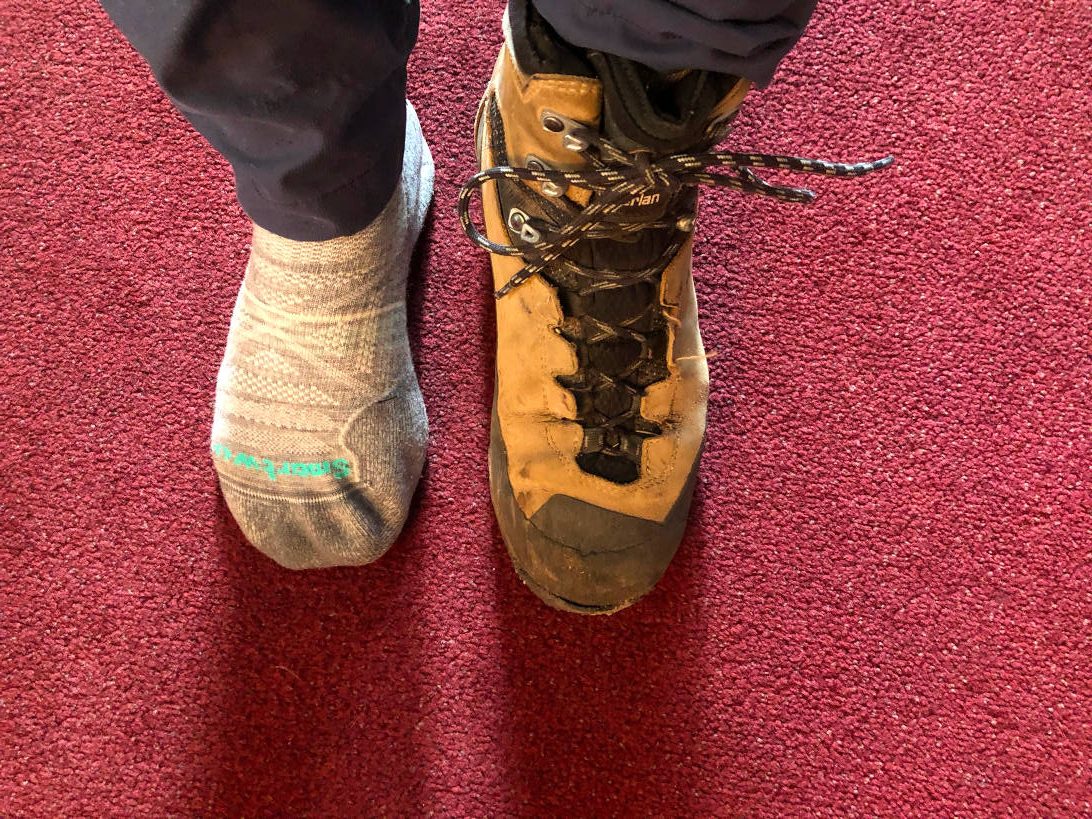
Keep your fingers and noggin toasty
The extremities are some of our most vulnerable parts. Hands and feet are the first parts of the body to start feeling the effects of hypothermia, so keeping them warm should be a top priority when going out in the snow.
Wear gloves, a neck warmer, and headgear that will hold heat in. We prefer materials that are lightweight, yet highly insulating, like gloves made of Merino wool. For hikes on extra-cold days, we like to layer these under waterproof, windproof pull-over mitts that act as an extra warming outer layer on top of a base glove.
For headgear, opt for a material that is quick-drying, moisture-wicking and breathable, like synthetic materials, such as polyester fleece, or natural materials like Merino wool.
Polarized sunglasses help you see in bright winter conditions
Those who bundle up and venture outside to enjoy the seasonal beauty of snow-covered tree branches and sparkling snowfields may be met with gorgeous landscapes—but they’ll also be exposed to eye-scorching glare from the sun’s reflection from the white surfaces.
The sun’s light becomes brighter when it’s reflected off shiny surfaces like snow or ice. This sun glare can burn the surface of your eye just as quickly as direct sunlight.
Polarized sunglasses are an excellent choice for winter hiking. They help you see better in bright conditions, reducing the glare so that you’re not blinded by the snow.
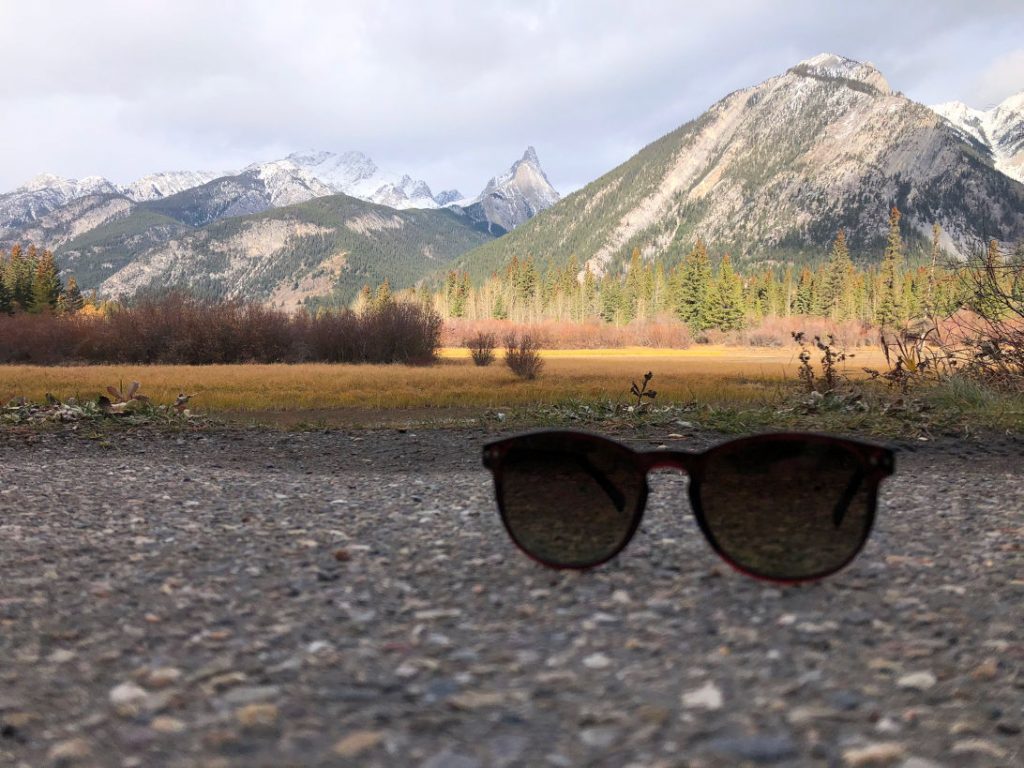
Beat the winter blues with a winter hike
Winter hiking is an amazing opportunity to take in the beautiful winter landscape (plus, it’s a great alternative to staying indoors and snacking on cookies). It just requires a little planning and preparation to stay comfortable, but if you follow the guidelines on this list, you’ll be out there enjoying the winter wonderland before you know it.
Source link




